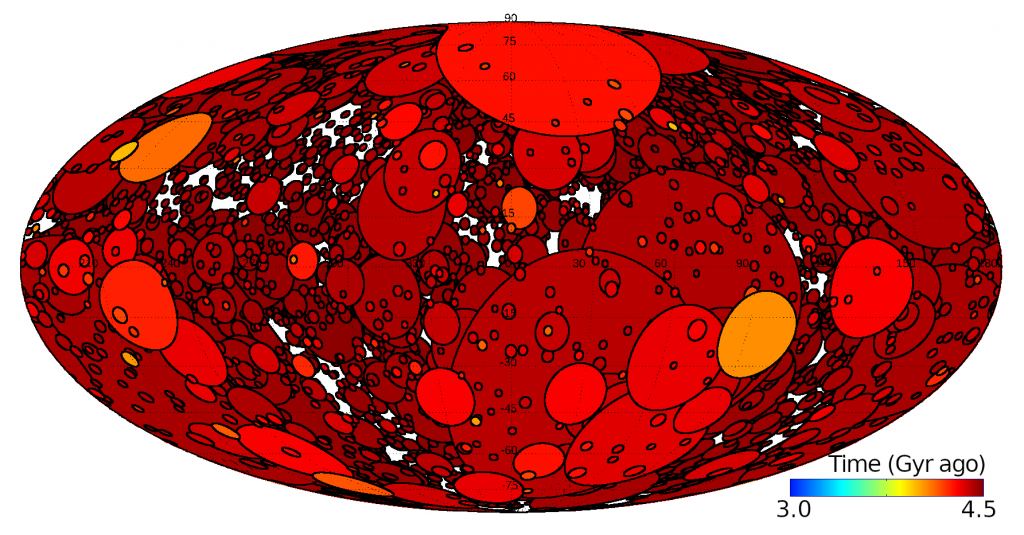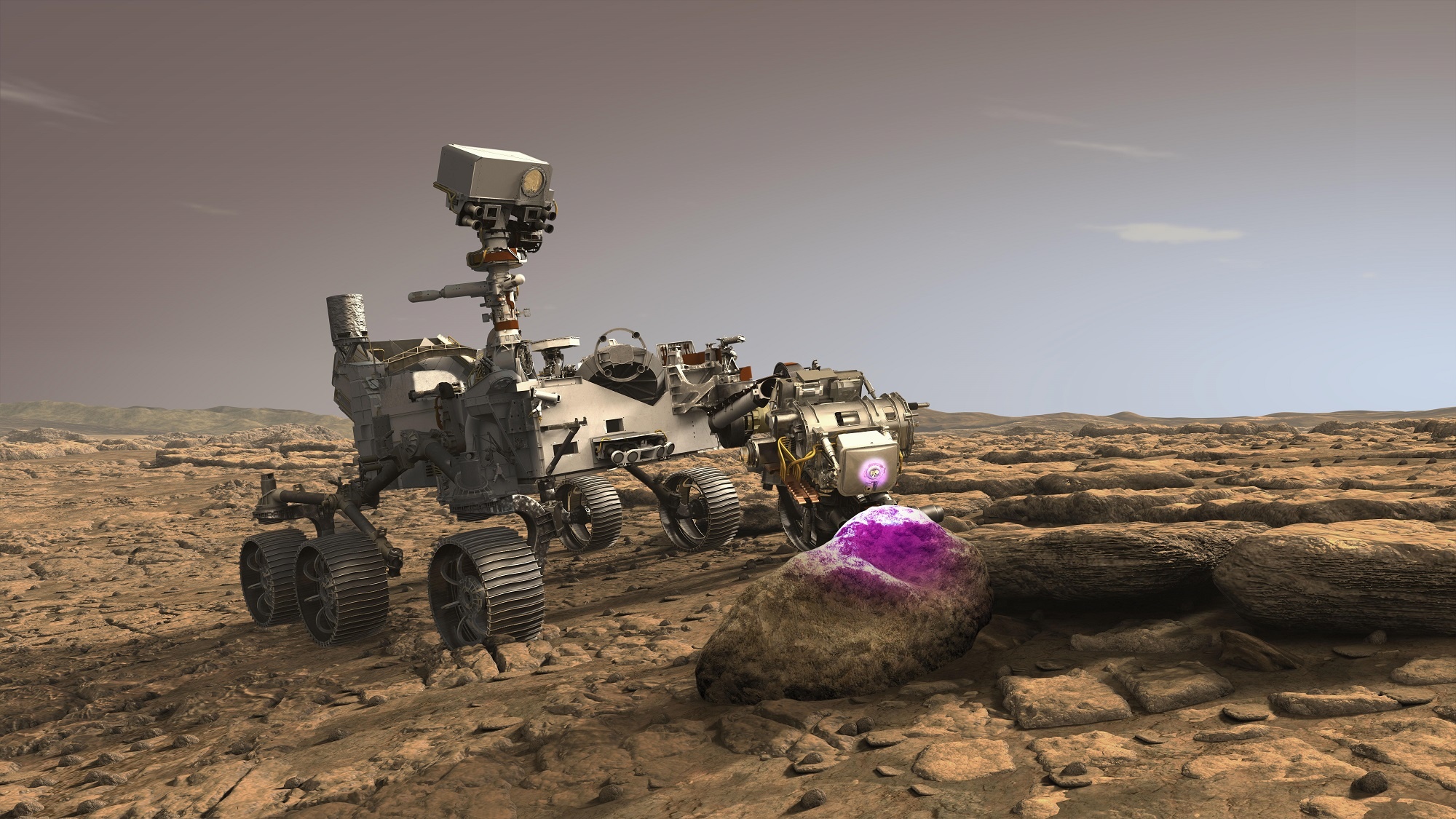In two days (on Thursday, Feb. 18th, 2021), NASA’s Perseverance rover will land on Mars. As the latest robotic mission in the Mars Exploration Program (MEP), Perseverance will follow in the footsteps of its sister mission, Curiosity. Just in time for its arrival, research conducted at the Southwest Research Institute (SwRI) has shown that Mars’ surface was shaped by flowing water several million years earlier than previously thought.
The mystery of how Mars went from being a warmer, watery planet billions of years ago to the extremely cold and arid one is one of the overall scientific objectives of the Perseverance rover (as is finding evidence of past or present life). When it arrives in the Jezero Crater, the rover will study and take samples from the sedimentary deposits that are the remains of the ancient river delta.
The research, which indicates that these formations were formed eons earlier than previously thought, was conducted by Dr. Simone Marchi – a Principal Scientist at the SwRI office located in Boulder, Colorado. For the sake of his study, which recently appeared in The Astronomical Journal, Dr. Marchi used the dynamical models for the formation and evolution of the Solar System to establish a new chronology for Mars.

As Dr. Marchi explained in a recent SwRI press release:
“The idea behind crater dating is not rocket science; the more craters, the older the surface. But the devil is in the details. Craters form when asteroids and comets strike the surface. The rate of these cosmic crashes over the eons is uncertain, hampering our ability to convert crater numbers to terrain ages. I took a fresh look at this and built on recent developments in the way we understand the earliest evolution of the solar system.”
Put simply, scientists have typically relied on measurements of the natural radioactivity of rocks in order to establish the age of different terrains on Earth. On Mars, however, scientists have largely stuck to counting impact craters to establish the chronology of the landscape. The reason for this has to do with the samples of lunar rock that were brought back by the Apollo astronauts.
For decades, scientists have used the radiometric ages of these rocks to establish and calibrate a chronology for lunar craters, which was then used to extrapolate the ages of craters on Mars. However, this method has run into problems when it comes to the earliest evolutionary periods of the Solar System. In recent years, our understanding of the timing of lunar and Martian impact rates has improved significantly.
In anticipation of Perseverance‘s arrival, Dr. Marchi focused his analysis on the Jezero crater. Measuring roughly 48 km (30 mi) in diameter, this impact crater is located within the Isidis Basin, which measures 1200 km (750 mi) in diameter and was created by an earlier and more-massive impact. Isidis could be the largest and oldest basin on Mars and cut a wide portion between the Borealis Basin and the Syrtis Major Planum.

The existence of smaller craters nestled within larger (older) ones is of particular interest to scientists, as samples obtained from these terrains could provide data on the timing of these consecutive impacts. This makes these findings all the more significant since one of the main science goals of Perseverance is to investigate potentially-habitable environments on Mars that could still hold signs of preserved life.
It is for this reason that the rover is tasked with obtaining samples from the clay-rich terrains and fluvial delta in the Jezero Crater, which are seen as evidence that the crater was once home to a lake. As Dr. Marchi said:
“These surfaces could have formed over 3 billion years ago, as much as 500 million years older than previously thought. NASA plans to have Perseverance gather and package surface samples that can be collected by a future mission for return to Earth for radiometric dating. That could provide vital ground-truth data to better calibrate our chronology models.”
Once the sames are cached, they will be returned to Earth by a sample return mission provided by the European Space Agency (ESA). This mission will consist of four elements: a Sample Return Lander (SRL) that will set down in the Jezero crater, a Sample Fetch Rover (SFR) that will retrieve them and bring them to the lander, a Mars Ascent Vehicle (MAV) that will launch them to orbit, and a Sample Return Orbiter (SRO) that will rendezvous with the MAV and bring the samples home.
As such, having an accurate timeline for these surfaces (how and when they formed and evolved) is of particular importance to scientists. According to Dr. Marchi’s new model, the Isidis Basin is now estimated to be 4-4.2 billion years old, thus providing an upper limit for the formation of the Jezero Crater and the existence of flowing water in the region.
Once the Perseverance rover lands and commences science operations, it will employ a number of advanced instruments to examine the Martian landscape. In addition to its sample-caching device, spectrometers, and drill, it will also deploy a small, autonomous rotorcraft (the Mars Helicopter), which will demonstrate aerial technologies and their effectiveness on Mars.
The mission to reconsrtruct Mars past and unlock its secrets continues, and is sure to get a lot more exciting very soon!
Further Reading: SwRI, The Astronomical Journal

